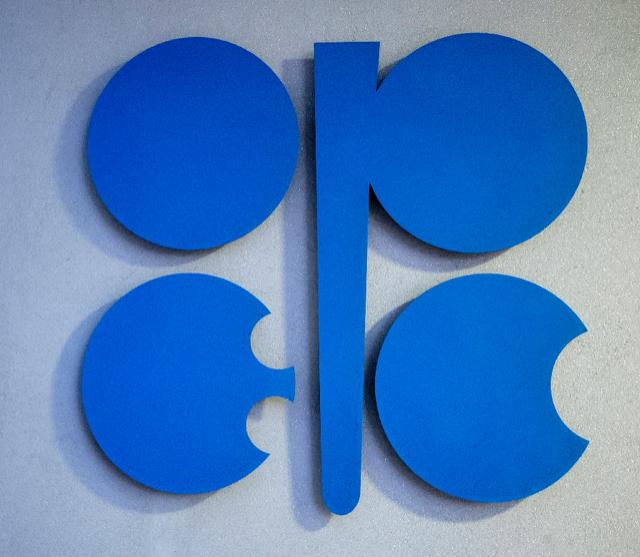By Jeph Ajobaju, Chief Copy Editor
Oversupply has slashed oil price by 9 per cent, creating anxiety among Organisation of Petroleum Exporting Countries (OPEC) members, even though Russia and Saudi Arabia are in talks to cut production.
Up to 20 cargoes of April-loading Nigerian crude oil are still available on the international market even though May trading is also under way, confirming a large excess supply.
Nigeria’s premium Qua Iboe crude was last offered at dated Brent at less $3 per barrel (pb), the lowest differential in two decades, according to Refinitiv Eikon data.
Traded levels are estimated to be even lower than this, Reuters reports, quoting a trader said.
Market anticipates Saudi, Russian deal
Saudi Arabia and Russia are “very, very close” to a deal on oil production cuts, Kirill Dmitriev, head of Russia’s sovereign wealth fund, told CNBC.
“I think the whole market understands that this deal is important and it will bring lots of stability, so much important stability to the market, and we are very close,” said Dmitriev, one of Moscow’s top negotiators.
Saudi Arabia and Russia were initially set to meet on April 6 to discuss output cuts, but that has now been pushed back to April 9, as oil prices continue to come under pressure.
Oil dropped on April 7 as hopes that the world’s biggest producers would agree to cut output were tempered by a worsening crude oil glut and the threat of a global recession that may be deeper than expected.
West Texas Intermediate (WTI) crude fell 9.39 per cent, or $2.45, to settle at $23.63 pb, around the lows of the day. Brent crude fell 3.57 per cent to settle at $31.87 pb.
On April 6, WTI dropped 8 per cent, Brent shed 3 per cent.
“The market is indicating that it wants some more certainty on whether the Russians and Saudis will strike a deal to limit supply,” said Gene McGillian, vice president of market research at Tradition Energy in Stamford, Connecticut.
“You’re also seeing pressure coming in from the fact that the market is expecting another week of sizable inventory gains here in the US,” he added.
The top global suppliers of crude, including Saudi Arabia and Russia, plan to meet on April 9 to discuss reducing output, but several energy ministers have said they will do so only if the US joins in with its own cuts, sources told Reuters.
US output declines
On April 7, the US Department of Energy, noting new monthly forecasts, pointed out that production is already dropping without government involvement.
Any final agreement on how much OPEC and its allies, known as OPEC+, will curb output would depend on volumes that producers such as the US, Canada, and Brazil are willing to cut, an OPEC source said on April 7.
Prices are likely to remain low due to a global recession that the latest survey of economists in a Reuters poll suggested will be more serious than was expected a few weeks ago.
OPEC+, which includes Russia, had been curtailing production in recent years even as US producers ramped up their output to make the country the world’s biggest crude producer.
President Donald Trump on April 6 said OPEC had not asked him to push domestic oil producers to cut production to buttress prices. He also said US output was already declining in response to falling prices.
Coordinated action by American oil producers would typically be a violation of antitrust laws.
Worldwide oil demand has dropped by as much as 30 per cent this year, coinciding with moves by Saudi Arabia and Russia to flood markets with extra supply after a previous output deal fell apart.
28m bpd oversupply
“With 28 million bpd of oversupply in the oil market in April and 21 million bpd in May, the global coordinated production cuts that are really needed may be too large for the producers to accept; perhaps twice as large as the numbers being discussed,” said Rystad Energy’s Bjornar Tonhaugen.
US crude oil stockpiles were seen rising for the 11th straight week, a preliminary Reuters poll showed.
The poll came ahead of reports from the American Petroleum Institute (API) on April 7, an industry group, and the Energy Information Administration (EIA), an agency of the US Department of Energy, on April 8.
On April 6, the US Department of Energy said Secretary Brouillette participated in a “productive discussion” with Saudi Arabia’s energy minister about the “ongoing challenges and instability in global oil markets.”
The two energy ministers agreed to “continue this dialogue through a G20 Energy Ministers meeting in the near future.”
Brief rebound
Oil briefly rebounded from its session low during afternoon trading after Reuters reported that Russia was ready to substantially reduce its production, citing two sources familiar with the matter.
Earlier, WTI fell more than 10 per cent after a meeting between OPEC and its allies, initially scheduled for April 6, was delayed. The postponement stoked fears on Wall Street that a production cut might face hurdles.
A meeting of OPEC in March ended with no deal after Russia rejected the 1.5 million bpd cut that Saudi Arabia had proposed in a bid to prop up falling oil prices as the coronavirus outbreak sapped demand.
This kicked off a price war between the two powerhouse producers.
But both Saudi Arabia and Russia have sought US cooperation in balancing the world oil supply.
Iraq, OPEC’s second-largest producer behind Saudi Arabia, is also in favour of global action.
On April 6, Saudi oil minister said the 13-member cartel and its allies need support from producers “outside of OPEC+.” His statement mentioned the US, Canada and Norway, specifically.
American drillers are still pumping near-record levels as the world is coming to the edge of its ability to store oil.
“The details of the emerging framework are complex, even if the overall picture seems clear on the surface: All in or no deal,” said Eurasia Group’s Ayham Kamel.
“Politically and economically, Putin and Prince Mohammad need US participation in some shape or form.”















